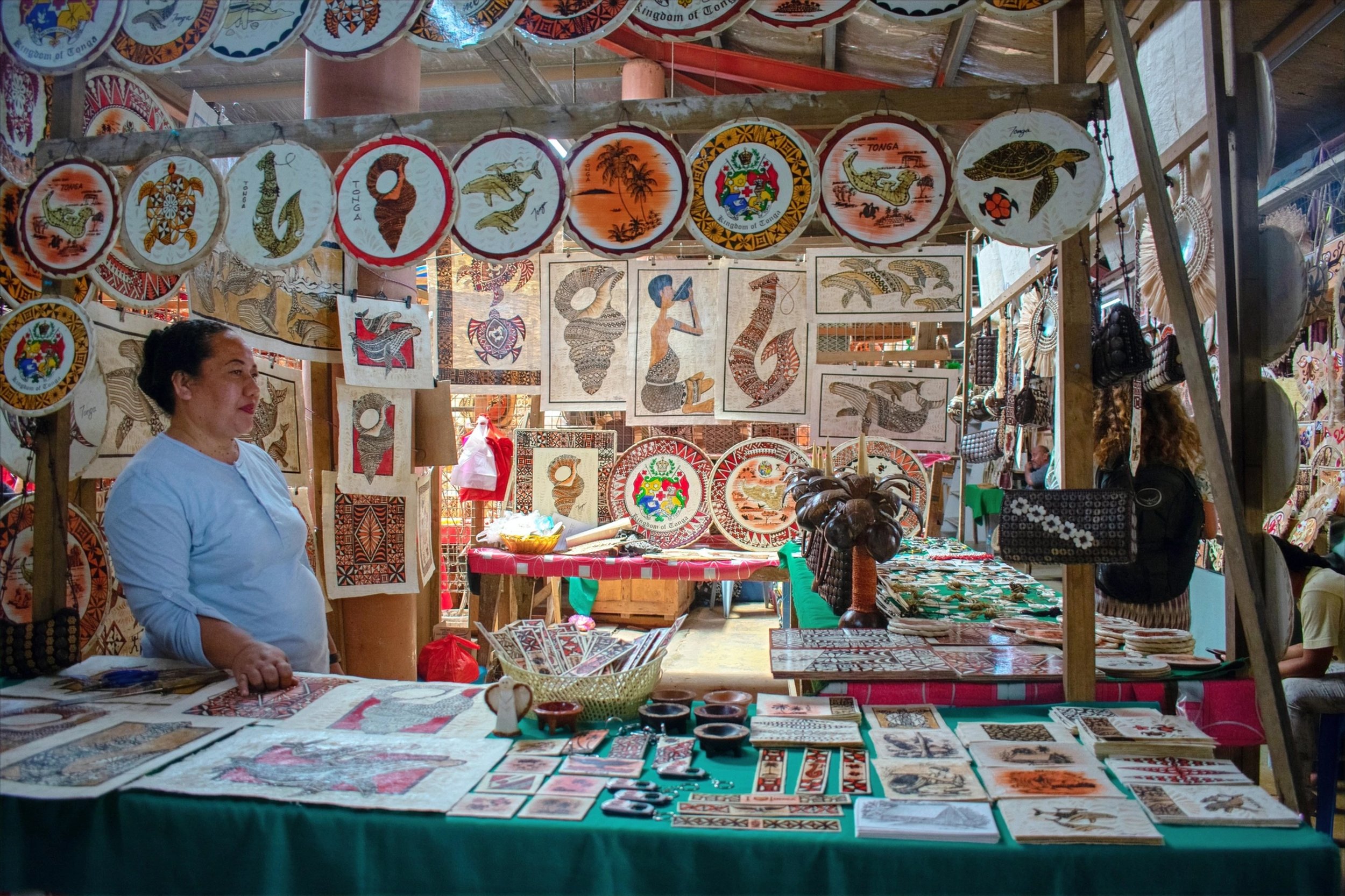The Places We Come From
If you wonder about the picture below, let me tell you more about it. First and foremost, many thanks to my friend Joao for the picture! Now, let's talk about Tongan handicrafts, which are portrayed in the picture alongside a Tongan woman who (most likely) made them.
You can find craftspeople all over the world, and the beauty of their work is in how they carry culture, tradition, and technique in every piece of art they create. The Polynesian people are deeply connected with the ocean, and their understanding of the world comes from the stories, symbols, and lessons of the ocean. The crafts in the picture have ocean animals and symbols such as turtles, whales, and shells on them. Each of these also represents something; for example, turtles are a symbol of wellness, eternity, and family, and whales are a symbol of wisdom. A popular material that is used for crafts is barkcloth (which comes from the bark of the mulberry tree), and a gift made with this material is regarded as very honorable.
I like the picture above because it represents what it means to be human; we are not only individuals but a consequence of an intergenerational community and the places our ancestors have made part of their identity. There's really a lot we can learn from Polynesian people's connection to where they come from.
Community and sense of place are deeply rooted in the Polynesian culture, and people introduce themselves not only by their first and last name but also include an explanation about who their families are and where they come from. If we lose the connection with the long line of events that led to our existence, what are we really losing? If we are born to be part of a community, what will happen when our communities are polarized and destroyed, when we no longer prioritize supporting each other?
Identity is so important for the Polynesian people that they get tattoos about their life stories once they reach a certain age. This was by far my favorite topic to learn about. Tattoos were invented in Polynesia with the name of tata’u. Upper body tattoos represent a connection with the spiritual, and lower body tattoos a connection with the Earth.
A tattoo was made by a tattoo artist who spent years learning this art; you would tell them about your life and they would make a tattoo based on your story and their expertise. Some tattoo symbols I know of are: a dot that represents beauty, three figures that represent community, a line of triangles (which are like shark teeth) that represent protection, strength, and adaptability, and waves that represent abundance, change, and continuity.
Pretty interesting how tattoos are so popular all over the world today, right? James Cook popularized them in Europe after seeing them for the first time in Tahiti and New Zealand.
In any case, we can find a lot of meaning when we look at our roots. There's an intimate connection between people and place. Places can shape people and people can shape places. The world is our canvas, what are we going to do with it?
I personally believe art is what allows us to express our experience as humans, and all the art in this picture really catches my attention because it is beautiful and says so much. Thinking more about it, all we do in life is an art as much as it is a science; you cannot create these crafts without learning the technique in the first place. Since we have such a short memory, which is worsened by a perception affected by the thought we will die one day, protecting this kind of legacy is very important to protect who we are and give us a sense of connectivity.
All the thoughts in this post come from my visits to American Samoa, Tonga, and Fiji.

